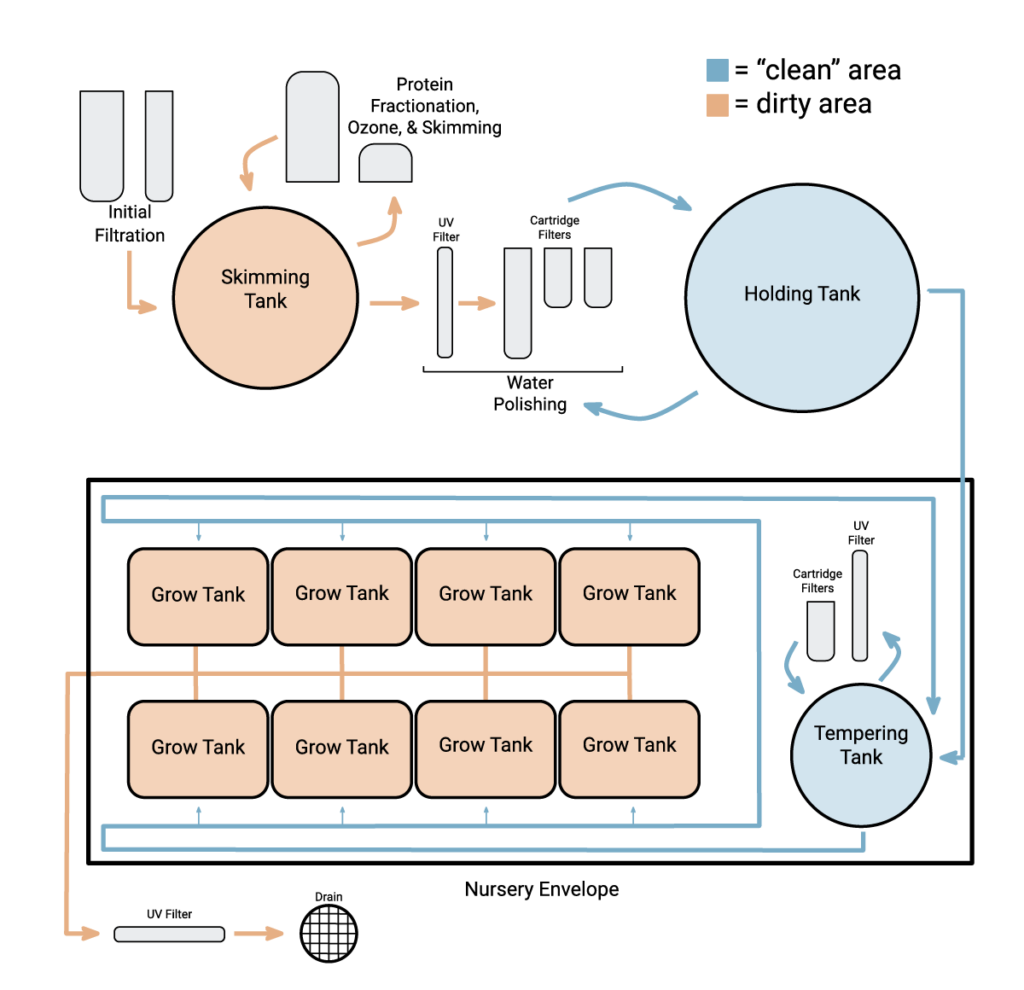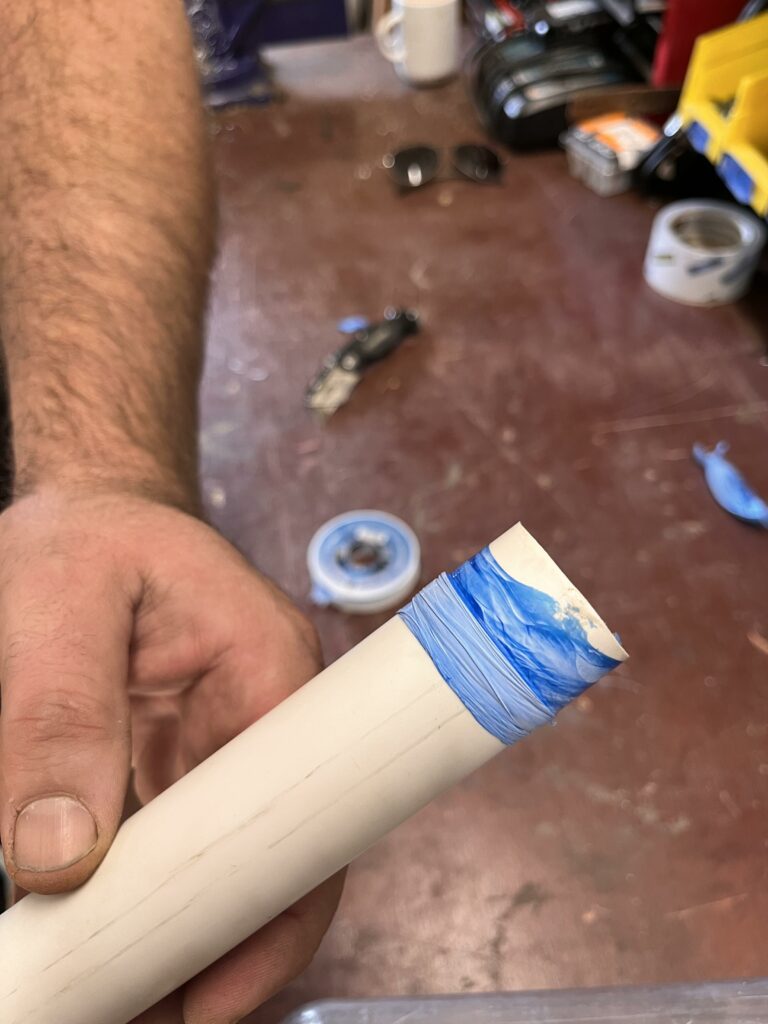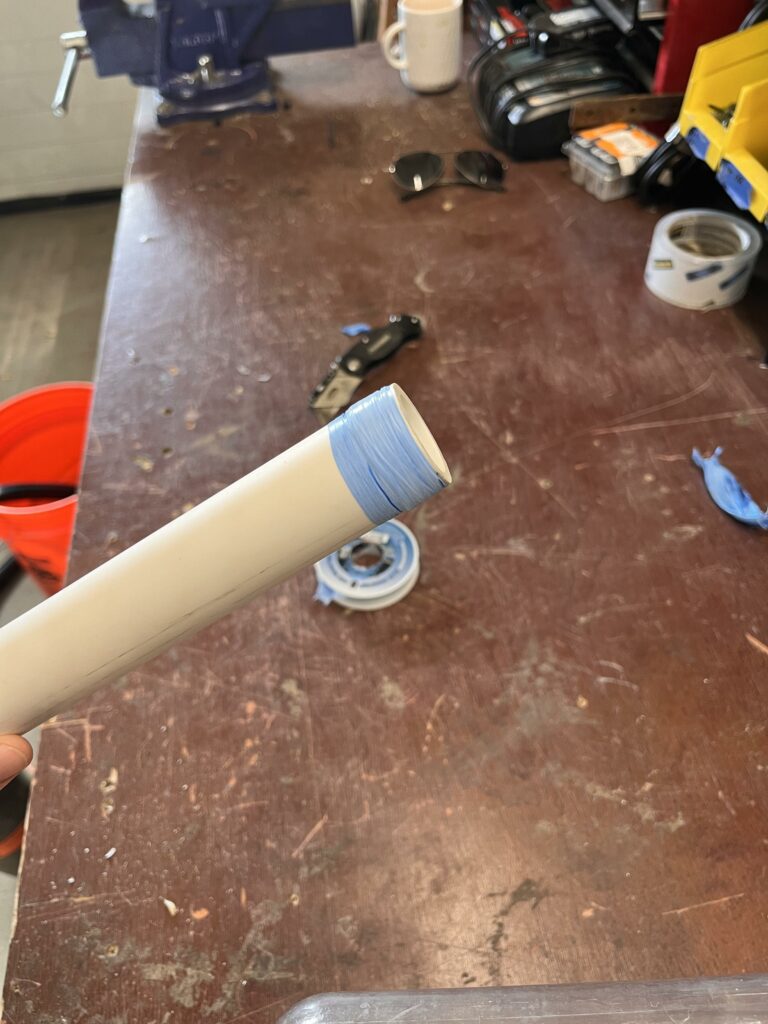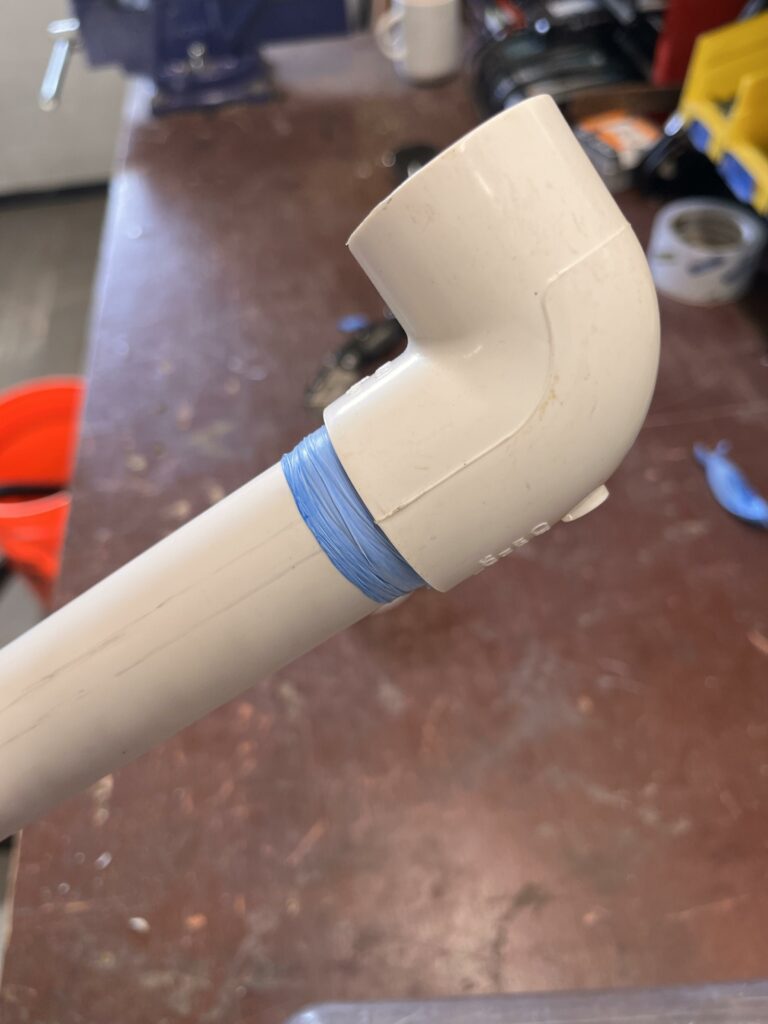Get eyes on every nook and cranny during cleaning.
Back to: Propagating Seedstring from Gametophytes
Tank and system cleaning is an essential process for running a successful nursery. This process looks slightly different for each facility. Clean your tanks and system once at the end of your season and again just before the new season is starting up. Contaminants in your tanks, pumps, pipes, tubing, etc. can all cause failure later on during your nursery season. Always think about your nursery as a whole system when deciding how to approach cleaning; one dirty pipe at the beginning of your system will cause contamination in other components down the line. Likewise, using the same tools to scrub a part of your system that only comes in contact with sterilized water that you used for cleaning a dirty part of your system without sanitizing the brushes between is bad practice. Thoroughly scrub and clean anything that could have biofilm or collect contaminants. Sterilize with a bleach solution that exceeds 500 ppm and use 1–2 grams of sodium thiosulfate per 1 gallon of bleach water that is 500 ppm to neutralize the chlorine. Use chlorine test strips to measure the concentration of chlorine in your water.
Click on the icons to see the general cleaning process:
There are a few main rules GreenWave recommends you follow when cleaning your tanks and nursery system:
-
-
Scrub everything to remove any biofilm buildup.
-
Clean the “clean” parts of your system first. Refer to the GreenWave System and Nursery diagram below.
-
Sterilize your brushes/cleaning gear between moving to different parts of your system.
-
Flush/rinse your system with sterile seawater after you finish cleaning and before you begin using it.
Definition
biofilm
The film left by the buildup of organic matter, often seen inside pipes and on the walls of culture tanks.
In order to fulfill rule #1, GreenWave avoids using PVC glue or piping that is too long for a scrub brush to reach. Instead, all of the piping in the nursery is connected by wrapping the end of pipes with teflon tape and pressing the pipe into the sockets of fittings. An exception for this is in areas that experience high pressure or where a failure would be catastrophic, like around pumps or on the bottom of water holding tanks in which case we use unions to segment glued sections into lengths of 3’ or less to facilitate through cleaning.
If you have many people working in your nursery in a given season, you need to put systems in place for recording activities. Make sure everyone is very clear on sterile procedures and the water filtration system. Here is a rough diagram of the GreenWave water system and nursery; make a similar diagram of your system for nursery managers to reference.



